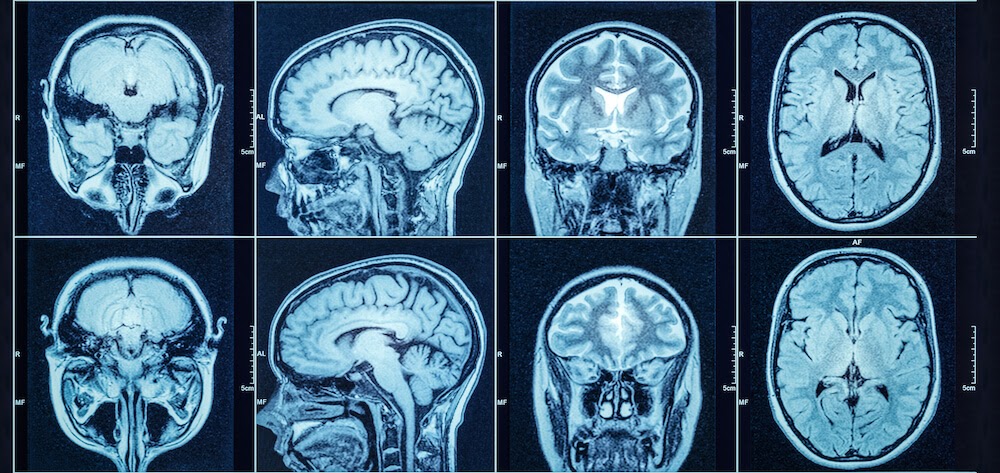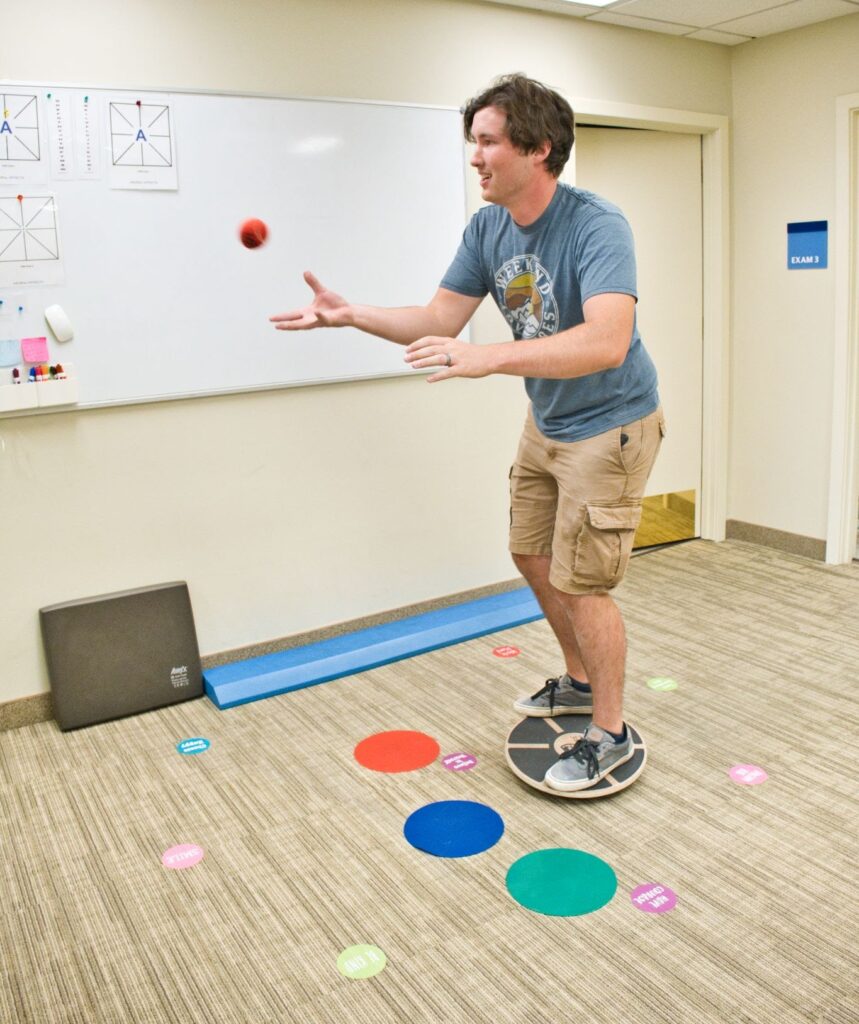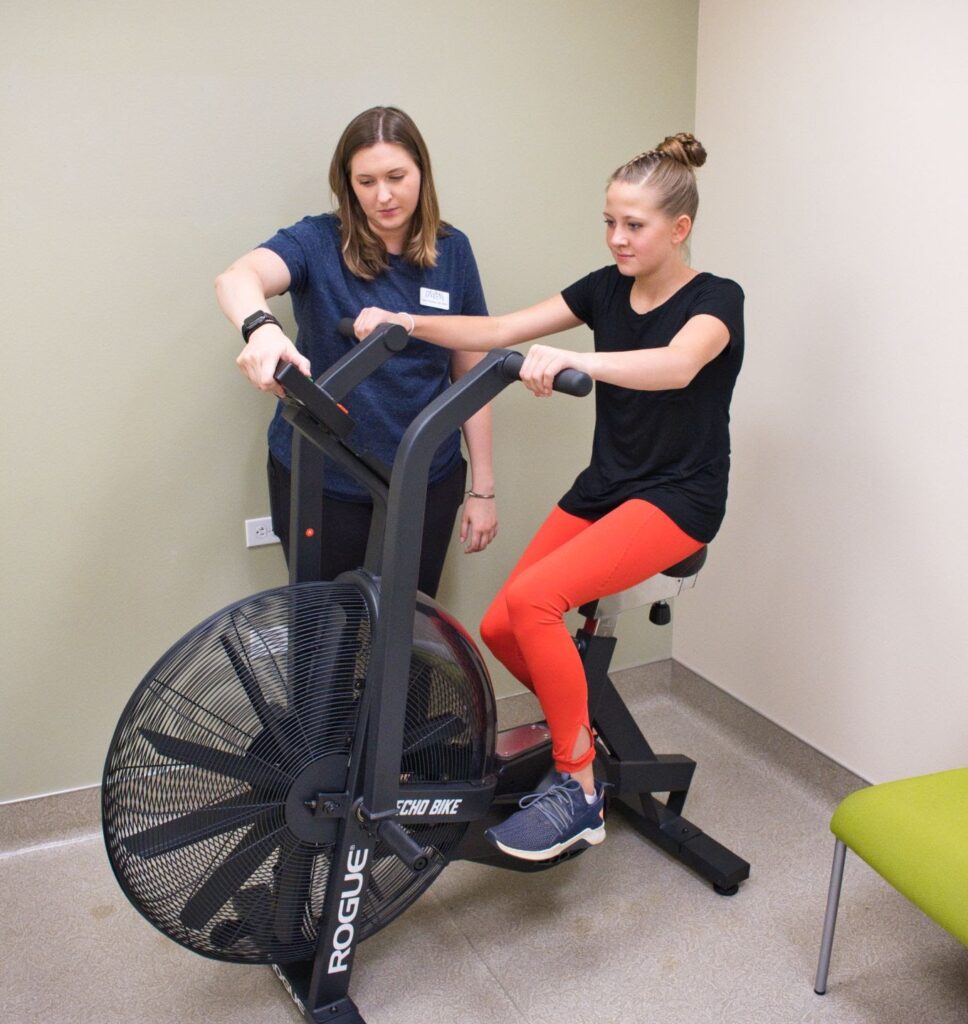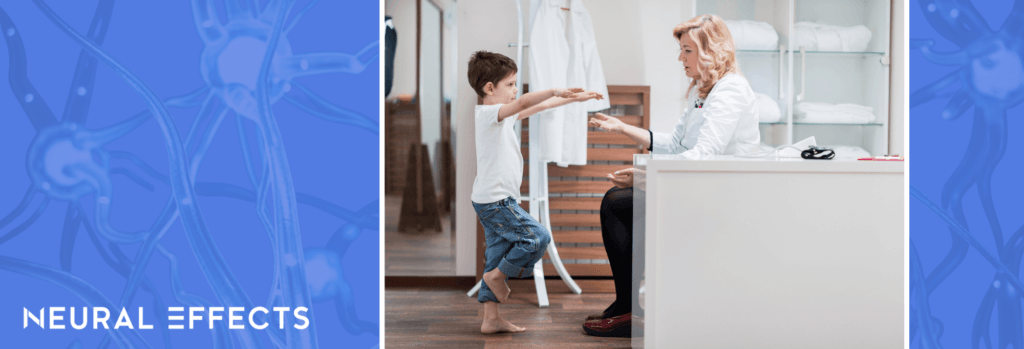If you suspect you have a concussion, it can be tempting to wait and see how you feel before visiting a doctor. But even if you just feel “a little off,” it’s still important to go in for a professional assessment. A concussion is still a serious brain injury.
Medical professionals can determine whether you have potentially life-threatening complications, such as brain bleeds. And if you do have a concussion, you’ll receive guidance on what to do next.
If you’re able to see a concussion specialist, they can do more extensive concussion testing than is routinely done in the emergency room or a pediatrician’s office. That testing will reveal what therapies would best aid your recovery.
In this article, we’ll explain:
- What a concussion is and its common symptoms.
- What to expect from a professional assessment.
- Why MRI and CT scans typically don’t show a concussion.
- How therapy improves concussion recovery outcomes.
If you live in Provo, Salt Lake City, or anywhere else in the Utah valley area, we can help you recover from your concussion and reduce your chance of long-term symptoms. We are in network for most types of medical insurance. Schedule your evaluation today.
What Is a Concussion?

A concussion occurs when the brain impacts the inside of the skull. You don’t actually have to hit your head to get a concussion. There just needs to be a force strong enough to move the brain inside the skull. Any jarring motion — including whiplash — could potentially injure the brain.
The symptoms of a concussion vary and can progress over time. Some concussions are mild, while others require an emergency room visit. If you experience any of these symptoms of traumatic brain injury (TBI), seek medical care at the emergency room immediately:
- Blood or fluid in the ear.
- Increased drowsiness or lethargic behavior.
- Large bumps, bruises, or swelling on the head.
- Persistent vomiting.
- Seizures.
- Unequal pupil size.
- Worsening headaches or neck pain.
But a concussion (classified as a mild traumatic brain injury, or mTBI) can still cause quite a few symptoms without directly “damaging” the brain. Here’s a list of common concussion symptoms:
Immediate Symptoms | Early or Delayed Symptoms |
|
|
If you have one or more of the symptoms on this list, you may have a concussion. And the more signs of a concussion you have, the higher the odds that it is a concussion.
It’s okay to use an online concussion assessment tool at home, but they don’t provide the care needed to ensure a safe recovery. So if your at-home research leads you to believe you do have a concussion, then that should be your sign to go in for a professional assessment.
What to Expect from a Professional Concussion Assessment
It’s a common misconception that you only need to visit a doctor if you’ve lost consciousness. That’s simply not true.
Up to 30% of concussion patients have symptoms lasting longer than three months. And it’s not uncommon for patients of our sister clinic, Cognitive FX, which specializes in post-concussion syndrome therapy, to have lived with their concussion symptoms for years.
The best option for a concussion assessment is a health care professional who specializes in concussions. They will be able to provide a more thorough assessment than a healthcare provider who is not extensively trained in concussion injuries and symptoms.
Note: No one is too young for a concussion evaluation. If you have young children or adolescents, read more about how we treat them here.
Every clinic or doctor will perform their assessment differently. It may help to ask what the assessment is like before you book your appointment, since not every provider is as thorough as we recommend.
Here is the assessment we use at our clinic, Neural Effects:
Post-Concussion Symptom Scale
Every concussion is unique. So before anything else, we want you to report how you experience your symptoms. Some people experience mostly visual symptoms, like double or blurred vision. Other people may be experiencing balance issues and severe headaches. Often, it’s some combination of “all of the above.”
If you came into our clinic today, we would give you a checklist of concussion symptoms. You would go down the list rating each on a scale from zero (no symptoms) to six (the worst possible).

These self-reported symptoms reveal important information about the nature of the head trauma and which neurologic systems have been affected. The results help guide our therapists’ decisions regarding which therapies are best for your recovery.
For example, if the report clearly showed that balance was an issue, our team would know to prioritize rehabilitation of the vestibular system.
Medical History Review
Not everyone gets a concussion when they are in perfect health. For instance, if you have depression before your injury, that depression might get worse due to the injury. We wouldn’t expect therapy to eliminate your depression completely, but we would make it a goal to at least get you back to your pre-concussion mental health while giving you resources to keep improving after treatment.
Or, say you have an old knee injury. Knowing about that allows us to adjust any therapies that could put too much strain on your knee.
In short, reviewing your medical history helps us:
- Understand what other health factors could be influencing your concussion recovery.
- Tailor your treatment plan accordingly.
We will also ask about how you got your injury (Contact sports? A fall? Biking? Car accident?). This helps guide what we look for during the physical exam.
If you’ve ever had baseline testing done (pre-injury cognitive testing done to help in detecting concussions if and when they happen), we will want those results as well.
Medical Imaging

Medical imaging tests involve diagnostic tools such as X-rays, CT scans, and MRIs. We’ll order these if we think you could have a fracture (in the skull or spine), or if we suspect a brain bleed.
Oftentimes, visitors come to our clinic having already sought medical attention elsewhere. If you already have images of your brain, we’ll review your test results with your medical history, as long as you send them to us before your appointment.
One problem we run into is that many people may have been told they don’t have a concussion after their MRI didn’t reveal any signs of injury. This is a misconception. MRI can’t “see” a concussion because it can’t “see” brain function. It only detects structural brain damage, which concussions don’t usually cause. Instead, concussions disrupt the ability of neurons to signal for the right amount of blood required to accomplish certain cognitive tasks (a process known as neurovascular coupling).
Where MRIs excel is in showing soft tissue damage from injuries such as a brain bleed or a stroke. Typically, if your brain injury is bad enough to appear on an MRI, then it’s a moderate or severe traumatic brain injury — not a concussion alone.
If you’d like to know more about the limitations of MRI testing, our sister clinic, Cognitive FX, has written about it here:
Can an MRI Detect Post-Concussion Syndrome?
Neurologic Assessment

Next, we assess your neurologic health. We will conduct a cranial nerve exam and assess your balance and vision.
The cranial nerves consist of twelve sets of nerves that mostly control senses and movement. We evaluate facial muscles, sensations, eye movements, and a series of other subtle indicators that can show if these nerves have been affected by your injury. If needed, we will make a referral to the appropriate specialist for the problem.
To evaluate balance, we administer a Balance Error Scoring System test. This might seem familiar, if you watch sports. It’s the same test that sports doctors administer to football players if they suspect a head injury.
We’ll also test your vision during this assessment. Vision dysfunction after concussion is extremely common and may include changes to your peripheral vision, depth perception, eye-teaming, ability to focus, and more.
The results of these tests inform the therapy you’ll receive. Barring any nerve damage, these are all systems we can begin to rehabilitate right away.
In rare cases, these neurologic assessments may show symptoms of other neurologic conditions, such as multiple sclerosis or Parkinson’s disease. If we suspect this, we will refer you for testing by a specialist.
Cervical Spine Exam
The cervical spine exam involves a hands-on palpation of the spine, neck, arms, and hands. We check for abnormalities that could indicate a fracture or herniated disc.
Finally, we assess muscle strength. Any differences in strength between sides of the body can indicate an injury that requires concussion care.
Neural Effects Provides the Latest in Concussion Treatment
Once our team understands the severity and nature of your concussion, you can start our therapy program. We can start treatment two days after you sustained your injury. In many cases, that means we can begin therapy immediately after your concussion diagnosis.
All of our therapies center around reestablishing proper communication between the brain and the nervous system. Our active approach to concussion management uses guided physical activity, breathing techniques, and cognitive tasks to improve blood flow in the injured areas of the brain and flood them with neurochemicals that help the brain recover. Studies show that this active approach improves concussion recovery times and outcomes.
For example, in one of our vestibular system and vision rehabilitation exercises, our therapists will have you balance on a Bosu ball while playing catch and a memory word game.

In another therapy, we ask you to hit targets that light up in random patterns to challenge your reaction time. Our staff will track your progress and ensure we’re challenging your brain just enough to benefit it, but not enough to cause your symptoms to flare up.

We add cardio exercise to our therapy sessions, as well. By increasing your heart rate and practicing deep breathing, you improve blood flow in the brain and release a cascade of helpful neurochemicals that can aid in your recovery.

At Neural Effects, every person’s treatment is catered to their needs. Generally, active concussion therapy consists of three sessions a week for two weeks, with some remote options available after the initial assessment.
In addition to therapy, we’ll give you resources for continued recovery at home. If you sustained a sports-related concussion, we’ll help you with paperwork and guide you through a return-to-play protocol.
If you live in Provo, Salt Lake City, or anywhere else in the Utah valley area, we can help you recover from your concussion and reduce your chance of long-term symptoms. We are in network for most types of medical insurance. Schedule your evaluation today.
